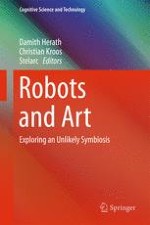2016 | OriginalPaper | Buchkapitel
We Have Always Been Robots: The History of Robots and Art
verfasst von : Elizabeth Stephens, Tara Heffernan
Erschienen in: Robots and Art
Verlag: Springer Singapore
Aktivieren Sie unsere intelligente Suche, um passende Fachinhalte oder Patente zu finden.
Wählen Sie Textabschnitte aus um mit Künstlicher Intelligenz passenden Patente zu finden. powered by
Markieren Sie Textabschnitte, um KI-gestützt weitere passende Inhalte zu finden. powered by
